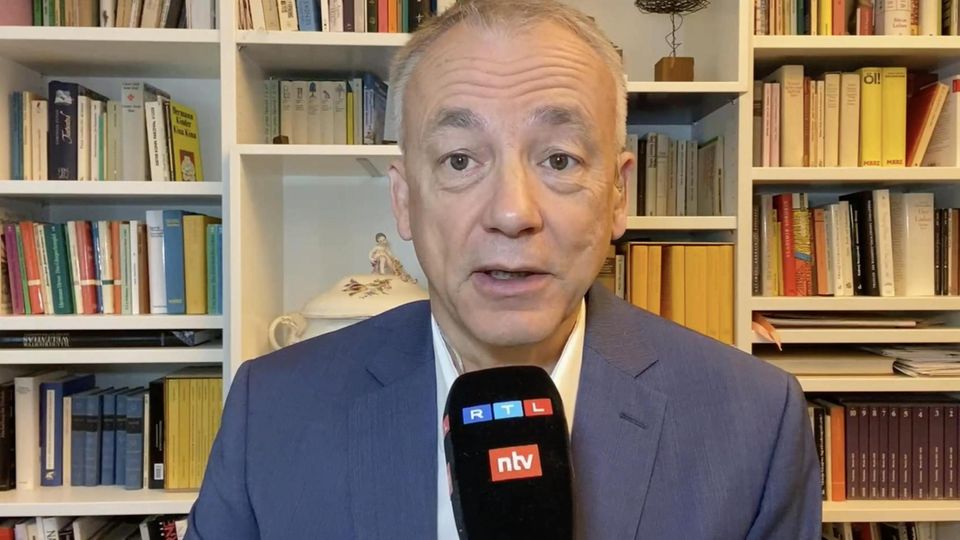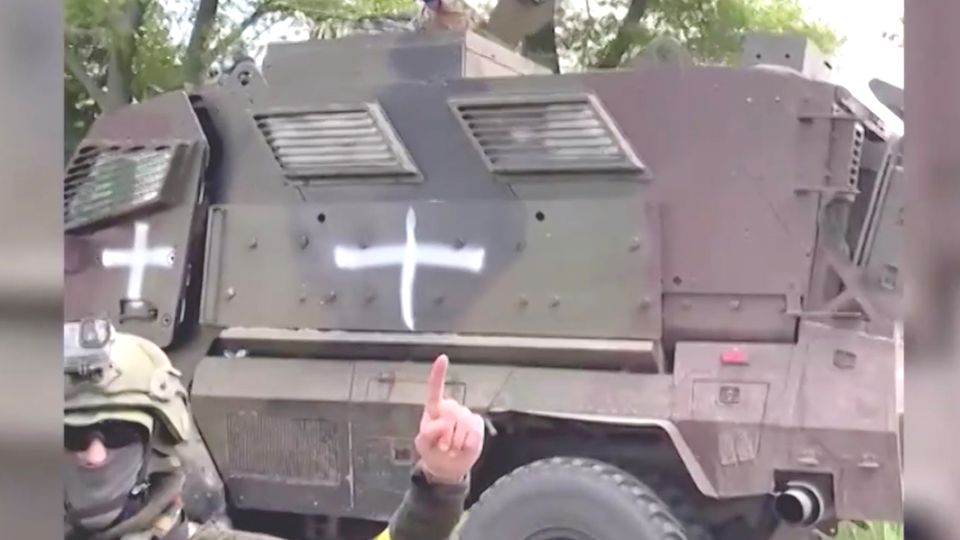“Russian Volunteer Corps” and “Freedom of Russia”
Right-wing martial artists and Russian nationalists: the militias behind the attack on Belgorod
The so-called Russian Volunteer Corps and the “Freedom of Russia” Legion claimed responsibility for the attack in the Belgorod region
©screenshot
Two allegedly Russian groups have claimed responsibility for the attack on Russia’s Belgorod region from Ukraine. It was the largest attack on Russia since the beginning of the war. What is known so far about the attackers.
The militias behind the attack on Belgorod
The “Russian Volunteer Corps” emerged in March claiming to have entered Russia in the Bryansk border region for the first time. It is led by Denis Nikitin (actually Kapustin), a well-known figure in the hooligan and far-right scene. According to the North Rhine-Westphalian Office for the Protection of the Constitution, Kapustin, who was born in Russia, had lived in North Rhine-Westphalia for almost 20 years, but his residence permit expired in 2019. According to this, he has been living in Ukraine since 2019. Russia classifies him as a “terrorist”.
At the beginning of the war, Kapustin called on his Telegram channel in German and English to come to Ukraine to fight alongside Kiev, according to the 2022 report for the protection of the constitution.
The founder of the right-wing extremist martial arts brand “White Rex” had already appeared in the authority’s reports in previous years with his label as an organizer of martial arts events: With “White Rex” he was “active throughout Europe” and had “significantly contributed to to professionalize the right-wing extremist martial arts scene,” wrote the North Rhine-Westphalian authority around 2019. Kapustin also led martial arts training in Germany and other European countries.

The second militia involved in the attack in Belgorod, the “Freedom of Russia” force founded in early 2022, is also classified by Moscow as “terrorist”. Their political leader is former Russian MP Ilya Ponomarev, who was the only one who voted against the annexation of Crimea in 2014 and subsequently emigrated to Ukraine.
A representative of the militia with the alias “Caesar” was the focus of the Ukrainian media’s reporting on the latest attack in Belgorod. The AFP news agency interviewed him on Ukraine’s eastern front in December.
He was fighting “against Vladimir Putin’s regime,” he said at the time, describing himself as a Russian patriot and “right-wing nationalist.” He comes from St. Petersburg and is a physiotherapist. The Russian investigative portal Agentstvo attributes him to the right-wing extremist nationalist scene. Both groups claim to have hundreds of fighters.
The targets of the attackers
The declared aim of both groups is to overthrow Kremlin boss Vladimir Putin. According to its own statements, the “Russian Volunteer Corps” undertakes reconnaissance and sabotage operations on Russian territory. Operations in Ukraine are coordinated with the Ukrainian army, and the corps acts independently on Russian territory, a fighter code-named “Fortune” told AFP in March. The corps is fighting for “a Russian nation-state on the territory of ethnic Russian-majority regions,” one of its representatives, Vladimir “Kardinal,” told independent Russian online media Sota in April.
The “Freedom for Russia” militia describes itself as a group of “partisans” who want to build “a new, free Russia.” According to its website, the group is organizing attacks on Russia’s military and railway infrastructure. After the attack in Belgorod, “Caesar” announced on Ukrainian television that the scale of the operations would “increase over time”.
your equipment
Kiev speaks of an “internal” problem in Russia and is silent about possible links to the two groups, which themselves do not provide any information about their financiers. Ponomaryov told British radio LBC this week that the Ukrainians are “helping us to train our armed forces and provide us with the necessary equipment.” The militia stated on Twitter that they had French RT61 mortars.
According to the Russian authorities, mortars, artillery and drones were used in the attack by the militias in Belgorod. The attackers themselves released videos from an armored personnel carrier allegedly belonging to Russia’s domestic intelligence agency FSB, which controls border guard troops.

The reaction of Russia
The Kremlin stressed that the attackers were Ukrainian fighters and not Russian insurgents. Moscow accuses Kiev of planning the attack to distract attention from its own defeat in Bakhmut in eastern Ukraine. The popular Telegram channel Rybar said the attacks were aimed at Ukraine to “spread panic” in Russia.

